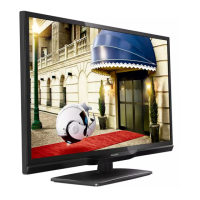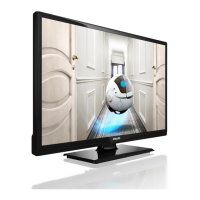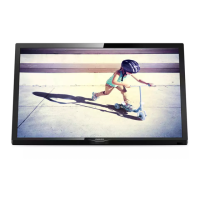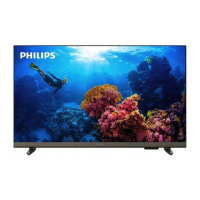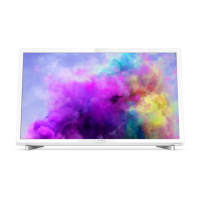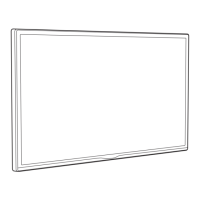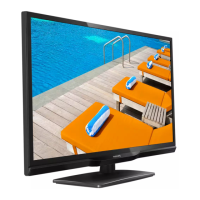
Do you have a question about the Philips 24HFL3010T and is the answer not in the manual?
| Screen shape | Flat |
|---|---|
| Response time | - ms |
| Display diagonal | 24 \ |
| Display brightness | 250 cd/m² |
| Display resolution | 1366 x 768 pixels |
| Native aspect ratio | 16:9 |
| Native refresh rate | 60 Hz |
| LED backlighting type | - |
| Display diagonal (metric) | 60 cm |
| Viewing angle, horizontal | 176 ° |
| Supported graphics resolutions | 1366 x 768 |
| Motion interpolation technology | PMR (Perfect Motion Rate) 200 Hz |
| Cable lock slot type | Kensington |
| RJ-48 ports quantity | 1 |
| Image formats supported | BMP, GIF, JPG, PNG |
| Annual energy consumption | 26 kWh |
| Subtitle formats supported | ASS, SMI, SRT, SSA, SUB, TXT |
| Tuner type | Analog & digital |
| Analog signal format system | NTSC, PAL, SECAM |
| Digital signal format system | DVB-C, DVB-T, DVB-T2 |
| RMS rated power | 10 W |
| Number of speakers | 2 |
| USB 2.0 ports quantity | USB 2.0 ports have a data transmission speed of 480 Mbps, and are backwards compatible with USB 1.1 ports. You can connect all kinds of peripheral devices to them. |
| Consumer Electronics Control (CEC) | EasyLink |
| Common interface Plus (CI+) version | 1.3 |
| USB 3.2 Gen 1 (3.1 Gen 1) Type-A ports quantity | 0 |
| Wi-Fi | No |
| Audio formats supported | AAC, MP3, WAV, WMA |
| Video formats supported | 3GP, ASF, AVC, AVI, H.264, M2TS, M4V, MKV, MP4, MPEG1, MPEG2, MPEG4, MPG, TS, VC-1, WMV, WMV9 |
| Product color | Black |
| Panel mounting interface | 75 x 75 mm |
| AC input voltage | 220 - 240 V |
| AC input frequency | 50 - 60 Hz |
| Power consumption (standby) | 0.3 W |
| Power consumption (typical) | 18 W |
| Operating temperature (T-T) | 0 - 40 °C |
| Cables included | AC |
| Depth (with stand) | 144 mm |
|---|---|
| Height (with stand) | 387 mm |
| Weight (with stand) | 3500 g |
| Depth (without stand) | 40 mm |
| Width (without stand) | 550 mm |
| Height (without stand) | 342 mm |
| Weight (without stand) | 3300 g |
Safety instructions must be read before using the TV.
Instructions for mounting the TV stand and VESA-compliant wall brackets.
General advice for connecting various devices to the TV.
Benefits of HDMI for quality, and using HDMI CEC for remote control.
Operating connected devices with the TV remote via HDMI CEC.
Connecting DVD and Blu-ray players via HDMI or SCART.
Connecting game consoles via HDMI and cameras via USB.
Options within the professional settings menu like Room ID and Channel setup.
How to update and install TV channels automatically or manually.
Manually installing analogue TV channels one by one.
Accessing the main setup menu for TV configuration.
Adjusting picture settings like style, color, contrast, and sharpness.
Advanced adjustments for color, contrast, brightness, and sharpness.
Selecting preset sound styles and adjusting bass, treble, and surround mode.
Auto volume leveling, clear sound, TV speaker selection, and audio output options.
Settings for hearing and visually impaired users, including audio description.
Navigating and using the TV guide features like opening and changing days.
Finding and switching to connected devices from the Sources menu.
Viewing photos, playing music, and videos from USB devices or computers.
Supported multimedia features, including USB, playback formats, and codecs.
Instructions for updating the TV software via USB.
Warning against attempting TV repairs yourself due to injury or damage risk.
Read and understand all safety instructions before using the TV.
Use the supplied wall bracket to secure the TV and prevent it from falling.
Precautions to avoid electric shock or fire hazards.
Precautions for lifting, mounting, and handling the TV to prevent injury or damage.
Precautions to prevent children from climbing or being injured by the TV.
Keeping coin-type batteries out of reach of children.
Ensuring adequate ventilation around the TV to prevent overheating.
Guidelines for cleaning and maintaining the TV screen without damage.
Legal terms, warranty information, and Philips' role as manufacturer.
Information on trademarks, copyrights, and licenses for technologies used.
